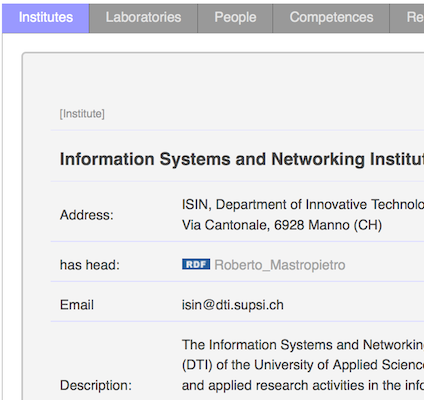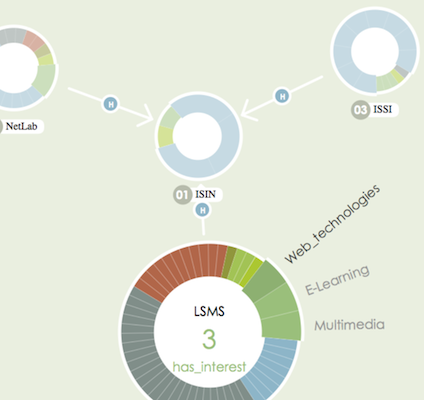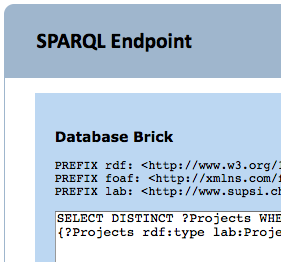This is the home page of a linked data initiative developed as part of
the Brick project, partially funded by the Hasler Stiftung (2011-2012). This
project aims to demonstrate the potential benefits of the Linked Data
approach by developing linked data applications in an academic context
using SUPSI open data. These data represent an initial set used for
demonstration purpose.
The process of data publishing and
consuming is considered. The process of data publishing basically
involves the choice of data, vocabularies and technologies to extract
RDF triples from existing sources, load them into a triple store and
expose them through the Web. For data consuming various applications
are developed to allow different data access and visualization.
Application demos
Textual Navigator (Brick) |
Graphical Navigator (Donut) |
SPARQL Query |
 |
 |
 |
Textual Navigator (Brick)
It is a textual resource navigator on the ISIN institute data (BRICK
navigator), that appears in the form of a web site. A simple menu allows
the user to visualize different types of resources (people,
competences, projects, etc.) and navigate through them by clicking on
the links. When the number of resources of a specific type is very high,
an ad-hoc search function is provided as a filter: for instance it is
possible to search for a project, by indicating its status, its type,
the leading unit, etc. For didactic purposes, the site also gives access
to the RDF description of each resource.
Graphical Navigator (Donut)
The same kind of information can also be visualized in a graphical form
using the Donut browser, based on the ASK KEN™ visual knowledge browser
(http://askken.heroku.com/). This kind of visualization can be useful to
explore a resource of interest and discover other connected resources,
creating a navigation path through resources that are interconnected.
This tool has the advantage to keep the context during navigation but
the potential drawback to become confused and with low performance when
the number of resources increases.
SPARQL Query
In addition to navigation, an advanced searching mechanism is provided through SPARQL queries.




